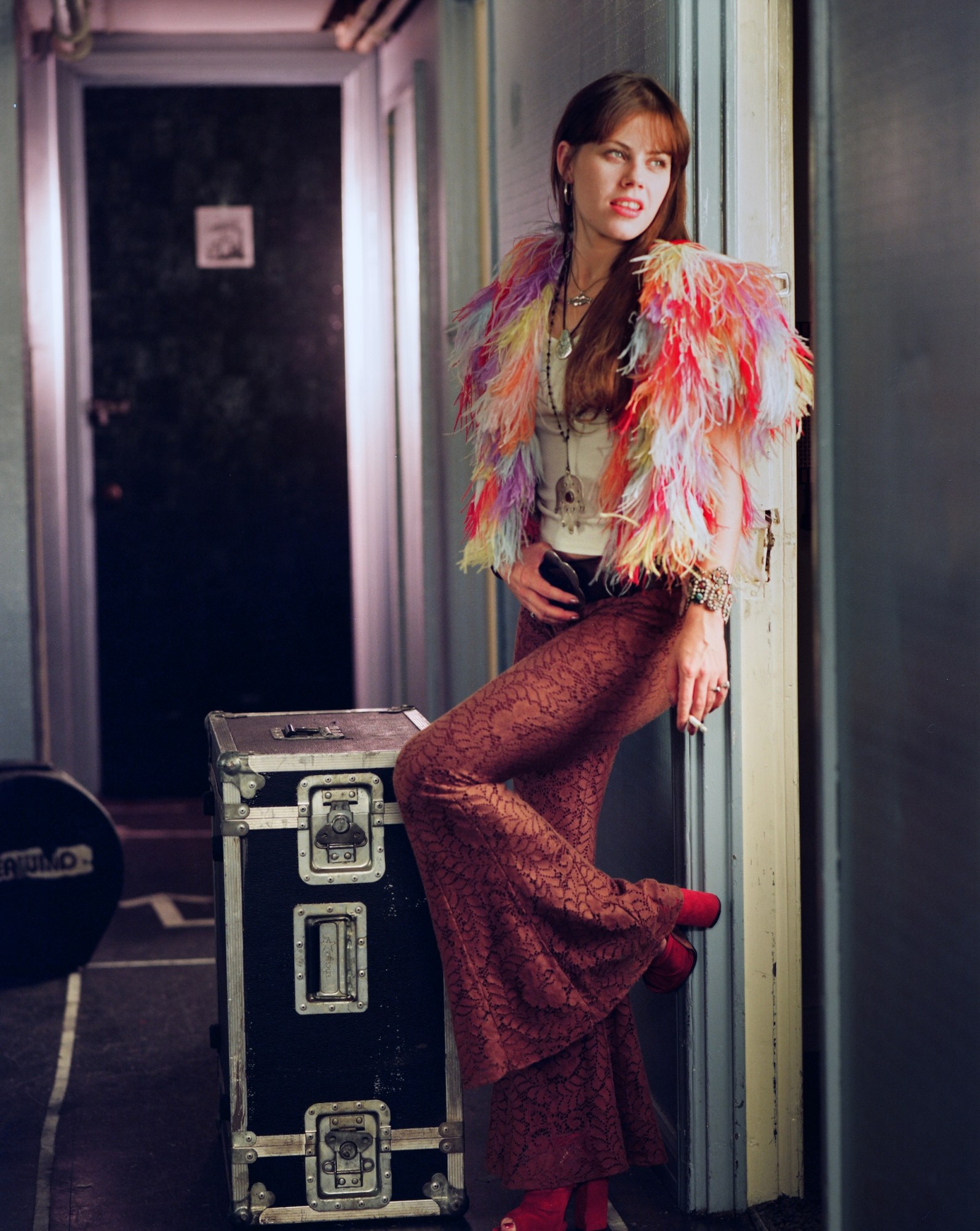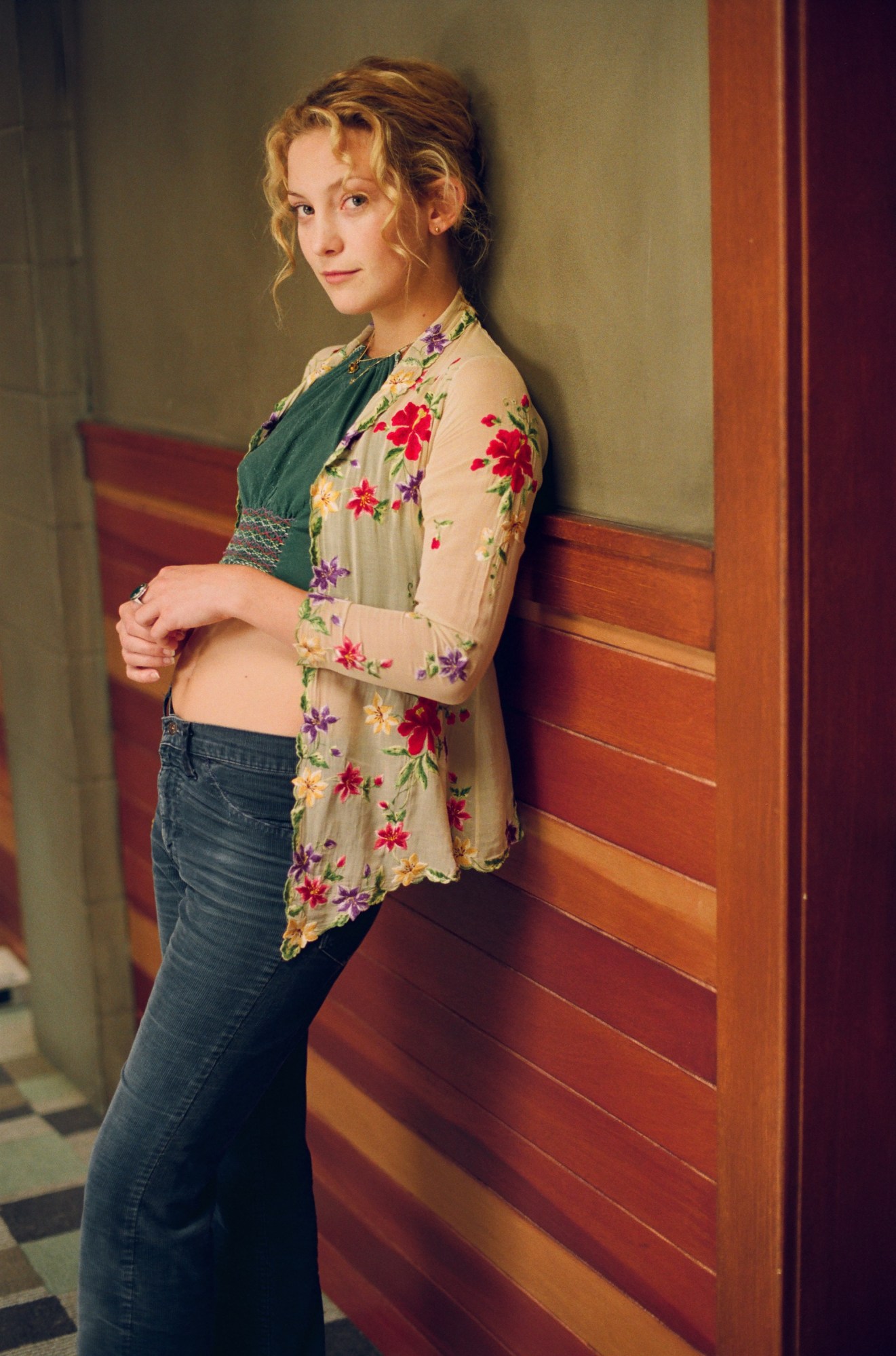Few movies have warmed our hearts quite like Almost Famous, Cameron Crowe’s coming of age tale that transports us musically, figuratively and sartorially, to the year 1973. The movie, based on Cameron’s own life on tour with the Allman Brothers and the Eagles, tells the story of a 15-year-old aspiring writer William (Patrick Fugit), who hits the road with the up-and-coming rock band, Stillwater, on assignment for Rolling Stone. They travel cross country, from gig to gig, as William gathers, or tries to anyway, all the juicy details for his story.
Fewer still, are the singular characters that live on decades after a movie’s release and become pop culture references, in and of themselves. Almost Famous’ Penny Lane (Kate Hudson), is one of those characters. She’s the leader of a group of music-loving girls called the Bandaids (Anna Paquin, Fairuza Balk, Bijou Phillips), who travel around the world to support their favourite musicians. “We are not groupies,” she says in her on-screen introduction, peering through her frosted purple sunglasses. She clutches the lapel of her coat, a red and white tackle box in her hand. Penny Lane’s eclectic wardrobe, the oversize 70s shearling, sheer crop tops and the era’s best bell bottoms immortalise her as the inimitable cool girl; the free spirit.
While the legacy of Almost Famous is indisputable, so are its costumes, which bring the whole story to life years later. One glance at Depop’s explore page and you’ll see ‘Penny Lane’ jackets, while moody snaps of the Bandaids populate Instagram moodboards and Tumblr alike. In honour of the film’s 20th anniversary, costume designer Betsy Heimann (also responsible for Pulp Fiction and Jerry Maguire) tells us how she made cinema’s most enduring fashion icons come to life on screen.
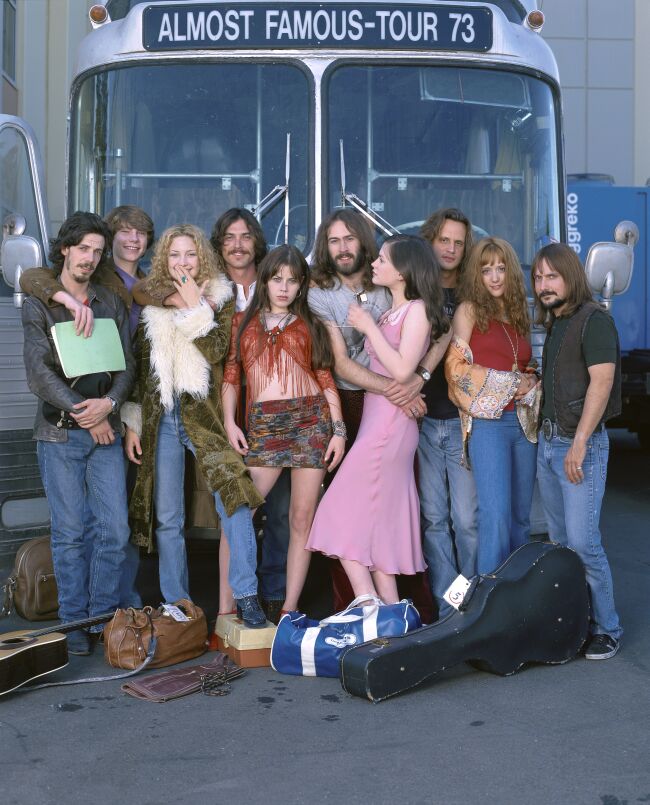
When you start working on a new movie, what is your process like?
Well, I read the script and I sit down with the director. I had a relationship with Cameron already from Jerry Maguire, and I knew that Almost Famous was a very personal film to him. I was a big music fan myself. I always do research first and look for inspiration within reality. I remember seeing Bianca Jagger stepping out of a limousine when she was in that famous white suit, but then I saw another picture of her and she was wearing what looked to me like vintage. I found out that vintage was just beginning to come on strong in this period, and vintage for the 70s was the 40s or the 30s. So there’s some more clues, you know, and that’s how I begin.
Who were some of the other real life rock stars or icons that you looked to for costume inspiration?
For the men, it was all about the Eagles and the Allman Brothers. There were a series of album covers that we did that are in the film, and William has a Stillwater poster on his wall in the end. But for the women, I was also very influenced by a New York boutique called Paraphernalia. It was very conservative begin to begin with, but in the mid 60s, they realised that they had a market for youth and they employed Betsey Johnson and Deanna Littell, and they imported Mary Quant from England. And so that was very inspirational to me and to the character of Polexia, Anna Paquin’s character… she was more of a 30s silhouette, very romantic, very vintage.
And then just the hard rock. Black Sabbath is a big deal in the movie and I actually did a run of Black Sabbath T-shirts. We made them new but to look old, we made everything for this movie and then we dragged it behind a truck so that it looked old. And so here comes Sapphire [Fairuza Balk] with Black Sabbath. She’s the girl in the leather, the lace and the feathers, she’s got all the jewellery that she’s collected from all these tours she’s been on around the world.
Penny Lane, she was an inspiration in and of herself, the character as written. There was nobody in real life that I connected with and said, “Oh, this is Penny Lane.” [She] was something that Cameron had created that came off the page whole and complete, without the need of anything more than understanding the period of time in which she existed.
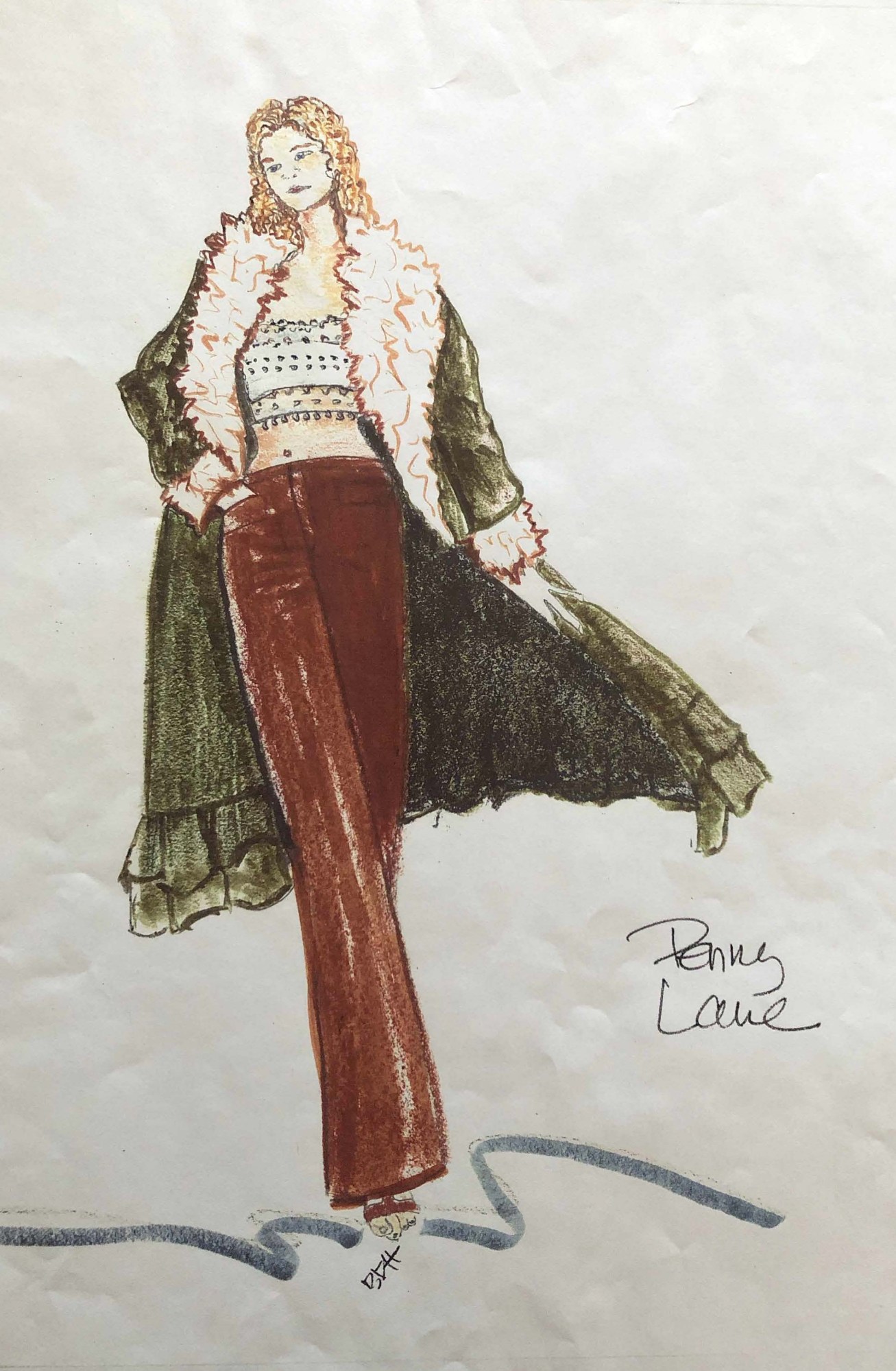
So, how did you then go about envisioning her wardrobe?
I think about her opening image. Opening image is something very important because it’s the audience’s introduction to the character. And if you meet somebody laying in a gutter, that’s what you’re going to think, they’re laying in the gutter. But here she is on the top of the ramp saying, “We’re not groupies, we’re Bandaids.” She seems so self-assured and secure, but it’s about the coat and Cameron wrote about the coat. He didn’t say what it was. We talked about it a lot. Not how it should look, but what it meant. Luckily, I understood the coat was her mask, it was her cloak. As long as she had that coat on, she was Penny Lane. That’s her. She wants us all as an audience to see her in her full glory with her magic cloak that she can open up and be the stewardess and she can close it up around her when she’s feeling low and sad. I was inspired by drawings from Erté, because I wanted it to be like a cocoon. She is the butterfly emerging from the cocoon. Then I made that coat out of a rug from Urban Outfitters and a piece of upholstery fabric from a shop in downtown LA that sold short ends. I knew it would have to have weight and I wanted it to be a little bit flirty. William is falling in love in this opening scene. He is falling in love with the world of a potential assignment. And now there’s a girl. The clues are all there. You know what the character has to do and you want the clothes to accommodate those moments.
What about Penny Lane’s accessories — her sunglasses and tackle box?
Yes, the tackle box. That is the genius of Cameron Crowe. I believe, perhaps I may be speaking out of turn, that the original Penny Lane carried the tackle box. But that was inspirational because then I had Polexia carrying a hard cosmetics case as a purse. One thing leads to another and you’re creating a world, so the world needs to be complete.
I went on the search for vintage fabrics and we combed the coast of California behind the scenes. My costume supervisor, Michael Dennison, we got on a plane and we went to San Francisco and Portland. The Buffalo Clothing Company had their big outlet, where all the clothes came in, in Seattle and we went digging through the barrels looking for 501s. I didn’t make the blue jeans in the movie, I wanted the real ones.
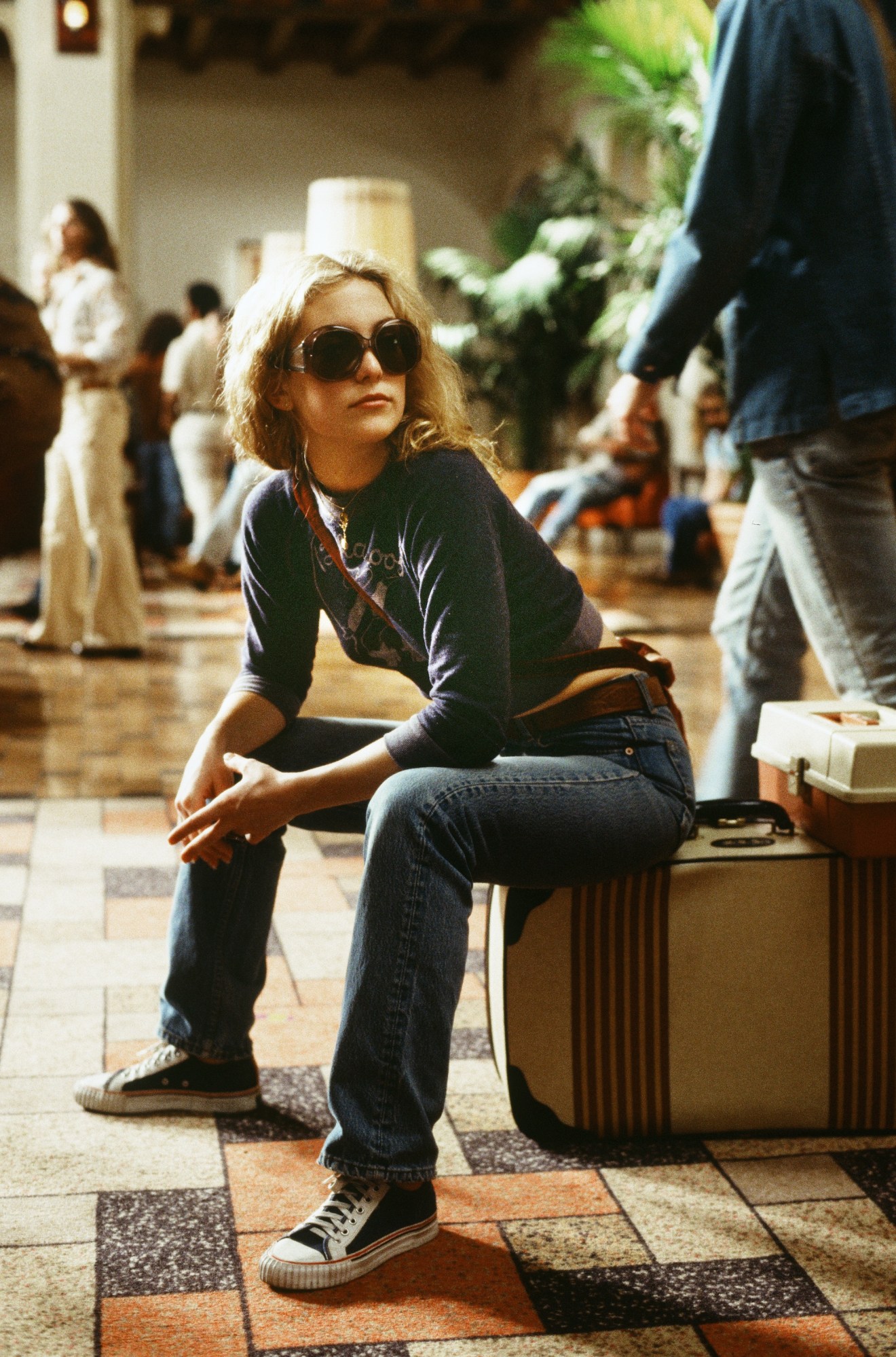
Those are still probably the most sought after pair of Levi’s.
Yeah. And we were looking for them in 2000, with the red stitching inside and the original orange tag, which was like a boot cut for the guys… I felt like sometimes Penny was one of the guys and sometimes she was the girl — different moments reflected that. She gets on the bus and the airplane in her 501s and sweatshirt, but when she goes to the gig, she dresses up a little bit more.
For each character, I made so many clothes, like a closet. With Penny I made a lot of those little crop tops for her, velvet bell bottoms, this little white blouse. She’s wearing that with her jeans and it’s her birthday in the film. They give her a cake and sing to her, Russell [Billy Crudup] is smiling at her across the room. It’s very sweet and then she finds out they sold her for $50 and a case of beer. So, as a costume designer, I’m reading this scene, and it’s not arbitrary. I made this blouse for that scene. I wanted something sheer and vulnerable — there’s no coat to protect her here. She’s out, she’s free. She’s happy, and then wham. Then she’s like, “What kind of beer?” And when I read that line, it broke my heart.
Penny Lane and Mia Wallace from Pulp Fiction, both of whom you’ve outfitted, are two of the most enigmatic movie characters of our generation. What do you think it is them that’s made them such icons?Well, I attribute it to their creators Cameron and Quentin [Tarantino]. Quentin and I did Reservoir Dogs, and then we did Pulp Fiction, and we decided that Jules and Vincent were Reservoir Dogs in terms of their costume. And then I thought that Mia was a reservoir dog too, but she really couldn’t live that out because she was married to the boss… we had no money on Pulp Fiction, and Uma [Thurman] is so tall. I couldn’t find pants for her that were long enough that we could afford, so I just found some cheap pants that fit her great and I cut them off… But I think you’ve also got to attribute it to the actors.
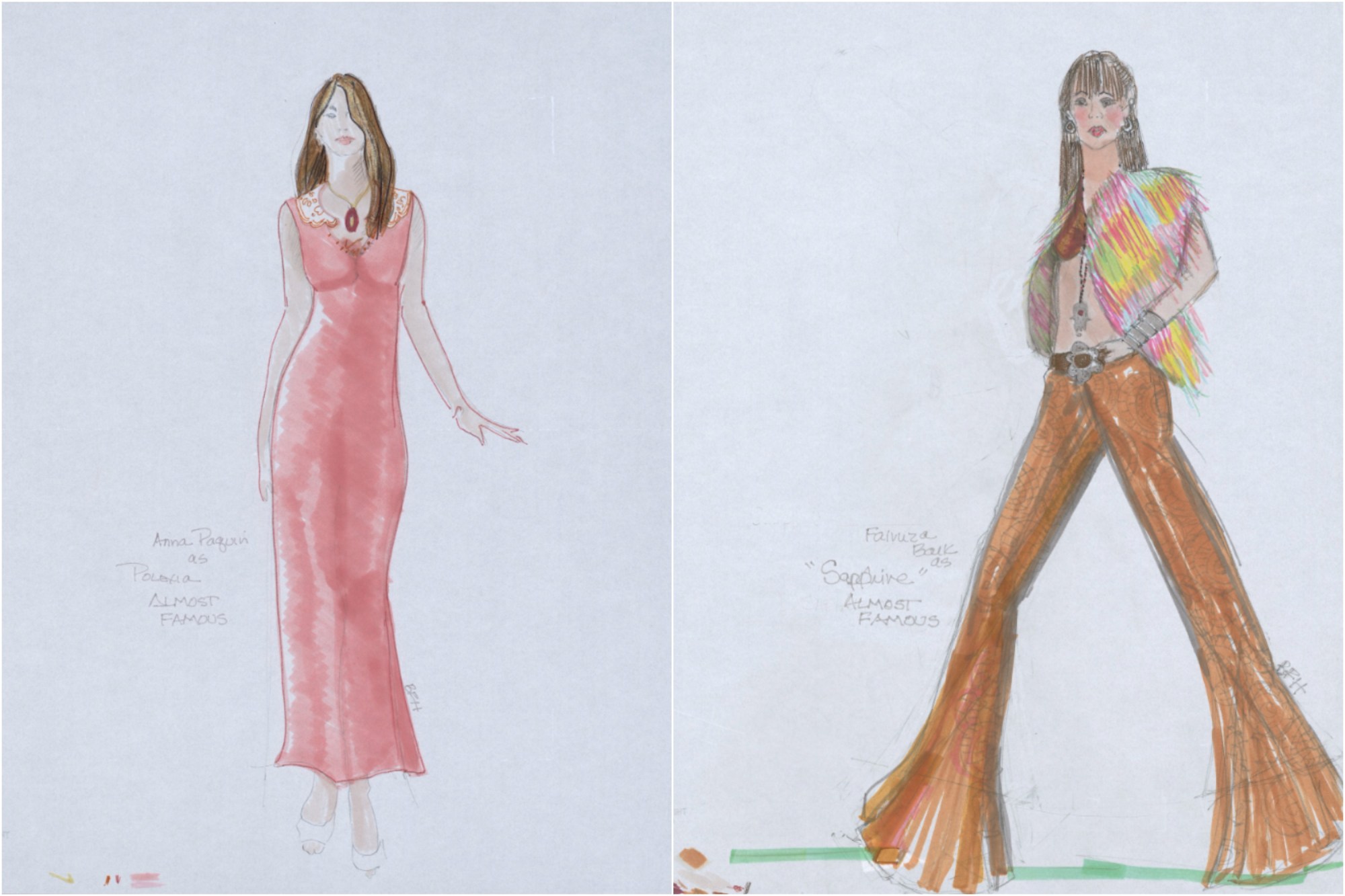
The script itself and the way these actors have played these roles are unforgettable, and even now we still see a reincarnation of these looks and outfits.
Back in the time frame that the film takes place, the Afghan coat was a big craze, mainly for men. That’s where Penny’s collar comes from. And then the Reservoir Dogs silhouette is very much iconic for men’s suits. John Travolta in Get Shorty set off a fashion craze for men, with the three button Polo under the suit.
And in these films we’re seeing those styles being reclaimed by women, which is still very much happening today…
Yeah. I used to think it was because people could relate to the character and wanted to be the character. There’s something to be said for that, and the fact that a way to be that character is to dress like the character. But there’s some magic that takes place, it’s just a confluence of creativity.
